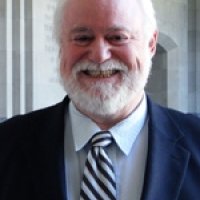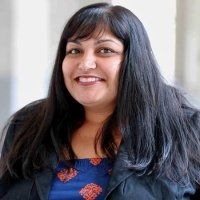Protecting Parks, Empowering People in Mozambique and Zambia
Wildlife areas and parks are designed to preserve plant and animal life in biological hotspots, but what about the people who live nearby these hotspots? In many parts of East Africa, communities press right up against park boundaries and people have few alternatives but to draw on the natural resources of protected areas. Conservation efforts depend on these communities’ cooperation and the sustainability – both environmentally and economically – of their livelihoods.
Dale Lewis and Katherine Raphaelson recently spoke at the Wilson Center about two integrated conservation and development efforts in East Africa: the Gorongosa Restoration Project in Mozambique and Community Markets for Conservation (COMACO) in Zambia.
The challenge, said Raphaelson is, “how do you help the people and help the wildlife and save the land?”
A Non-Profit, For-Profit Hybrid
Dale Lewis started his career as an elephant conservationist in Zambia, where he grew accustomed to thinking of poachers as villains. But since then Lewis said he’s gained an “empathetic appreciation of the real plight of small-scale farmers, the challenges that they face, and some of the reasons they often have to turn to poaching” and other destructive livelihoods.
“It is so easy to exploit farmers who are uneducated and often illiterate,” said Lewis. Farmers in East Africa are often unable to get a fair price for their goods – they live too far outside towns to bring their wares to market, and are forced to sell to merchants passing by for much less than the value of the produce. It is difficult for these farmers to earn a living without turning to poaching to supplement their income.
Law enforcement alone won’t end poaching, Lewis said. “We’ve got to offer the farmers a better deal than trading game meat on the illegal market…a deal that can get the farmers that we work with in a safer, better place so they don’t poach.”
As executive director of COMACO and CEO of its business branch – the food company, It’s Wild – Lewis has found an opportunity to do that. COMACO provides farmers with an alternative to destructive livelihoods by training farmers to improve production and reduce environmental degradation and then purchasing their products to be processed and sold to consumers.
COMACO supports farmers throughout the production process. Farmers are trained in conservation farming methods like replacing chemical fertilizers with compost and mulch, as well as other livelihood generating activities, like beekeeping and fish farming. Under the “It’s Wild” brand, COMACO’s business branch then buys the products from farmers at or above market price, guaranteed. It sometimes takes a few years for farmers to trust that their product will be bought at a good price, Lewis said, but once they do, they make more money, have more security, and are more invested in improving their land and yields.
There have been great environmental benefits from this model as well: Lewis showed a map of deforestation rates, with net growth actually occurring in many areas where COMACO works. Better farming practices means that farmers can work the same plot of land year after year, rather than depleting it and then clearing more. COMACO also actively recruits poachers, requiring them to surrender guns and snares before joining producer groups. More than 2,000 firearms and 80,000 snares have been collected so far, Lewis said.
Engaging the Community
For the Gorongosa Restoration Project, integration was a focus from the beginning. Founder and philanthropist Greg Carr – who made a fortune during the U.S. tech boom of the 1990s – initially wanted to focus on HIV/AIDS in Africa, Raphaelson said, but soon realized that “if he just focused on health, he would get nowhere. He had to deal with the lack of education, he had to deal with the lack of opportunity. And he began to realize he had to do some project that integrated health, education, and economic development.”
Carr chose Mozambique’s Gorongosa National Park for this new integrated project. “Gorongosa has some of the most amazing wildlife on Earth,” said Raphaelson, and was once a major tourist destination, but much of the park was decimated by 16 years of civil war that ended in 1992.
Rehabilitating the park requires the cooperation of the 5,000 people who live within its borders, and 120,000 who live in the surrounding area. They are “among the poorest people in the world, with terrible health problems, and they are engaging in activities that are destructive to the park in order to survive,” Raphaelson said, like poaching and deforestation.
To address these compound issues, the Gorongosa Restoration Project uses a population, health, and environment model of integration. Such programming is based on “the idea that security of the environment is directly related to the population and the health of the people.”
The project has brought interventions like mobile clinics, which provide health services like pre- and post-natal care and family planning, and latrines to support the communities living in and around the park. It also focuses on educating children and adults about the environment, with the idea that more conservation will come with greater appreciation for the park. And the project trains community members in alternative livelihoods ranging from beekeeping and improved farming techniques to jobs supporting the tourism industry like working as guides and rangers.
“There are a lot of people in and around this park that need to be there, they’re not going anywhere,” said Raphaelson. “We need to engage them to…bring Gorongosa back to what it once was.”
Long-Term Vision
Both projects are committed to long-term work within their target communities, a practice which can be unusual for developmental organizations.
The Gorongosa Restoration Project is a 20 year commitment to stay involved in the park to the government of Mozambique. “[Gregg Carr] realized he had to have a very, very long-term approach in order to really make a difference,” Raphaelson said.
COMACO has gone a different route by combining a donor-supported, non-profit arm with a business arm. Organizations that rely wholly on donations have a certain perspective, Lewis said – they realize that “the money will end.” But COMACO is supported by Zambians purchasing It’s Wild products – the company released Zambia’s first home-grown breakfast cereal, for example. As well, domestic customers are willing to pay a higher price for higher quality products that support small Zambian farmers, he said.
“There’s a [sense about a] long-term future, about a national good, and a sense of ownership,” Lewis said. “That’s what I think development needs to be more of.”
Drafted by Carolyn Lamere, edited by Schuyler Null
Speakers


Hosted By

Environmental Change and Security Program
The Environmental Change and Security Program (ECSP) explores the connections between environmental change, health, and population dynamics and their links to conflict, human insecurity, and foreign policy. Read more


Africa Program
The Africa Program works to address the most critical issues facing Africa and US-Africa relations, build mutually beneficial US-Africa relations, and enhance knowledge and understanding about Africa in the United States. The Program achieves its mission through in-depth research and analyses, public discussion, working groups, and briefings that bring together policymakers, practitioners, and subject matter experts to analyze and offer practical options for tackling key challenges in Africa and in US-Africa relations. Read more

